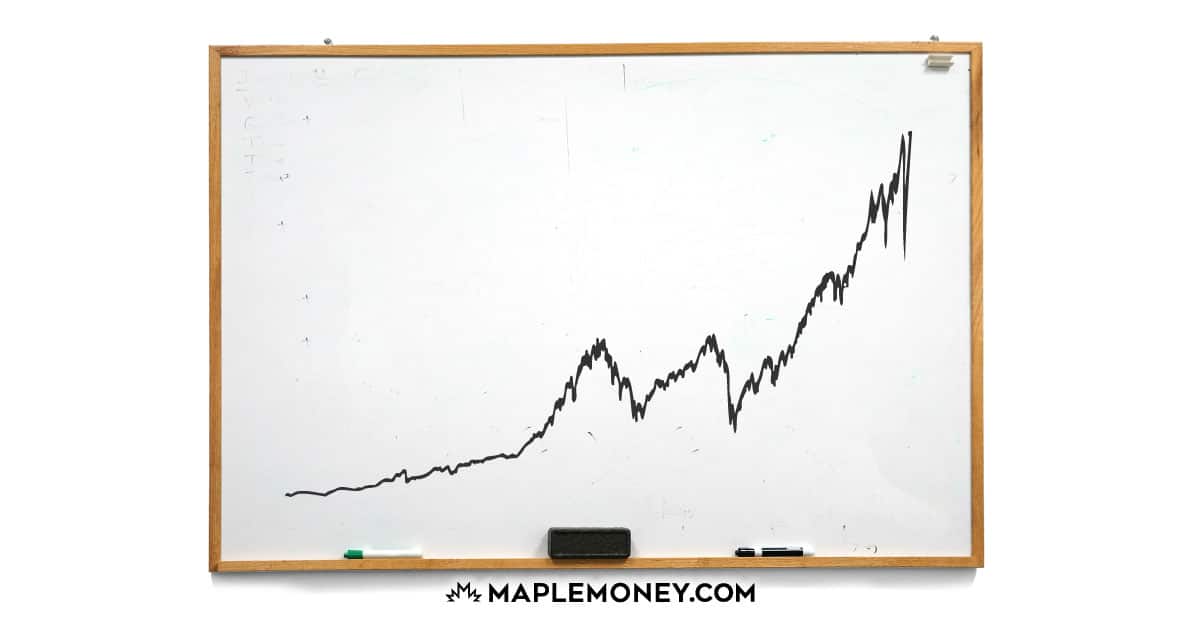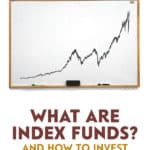What Are Index Funds? (and How to Invest in Them)

If you’re new to investing, index funds are a great way to get started. They not only offer instant diversification, they are also low cost and easy to maintain. But as with anything else, not all index funds are created equal. In this article, I’ll cover the basics, and explain their key characteristics. If you’re thinking of investing in index funds, here is what you need to know.
What Is an Index Fund?
An index fund is a type of mutual fund or exchange-traded fund (ETF) that follows a passive investment strategy by buying the stocks held inside a broad stock market index, such as the S&P/TSX Index or the NASDAQ.
Unlike with actively managed mutual funds, the managers of an index fund are attempting to match the market return rather than outperform it. This strategy has proven effective, as studies have shown that most fund managers underperform the benchmark.
Characteristics of an Index Fund
While there are hundreds of different index funds in existence, the vast majority have the following in common:
- Fund holdings are tied to an underlying index. While there can be slight deviations, the vast majority of index funds and index ETFs track an underlying stock market index. For example, a Canadian Equity index fund might hold all of the stocks tracked by the TSX 60 index. Many US Equity index funds, on the other hand, will follow the largest stocks in the US market, also known as the S&P 500.
- Low cost. When compared with their actively managed fund peers, index funds feature very low MERs. The difference could be more than 2% per year.
- Passive management style. Most index funds follow a passive investment strategy. This requires less oversight and strategic maneuvering by the fund’s managers.
What Is a Management Expense Ratio (MER)?
Any conversation around index fund investing requires, at the very least, a basic understanding of mutual fund fees, more specifically, MERs. The MER combines a fund’s annual management fee, along with operating expenses and taxes. It’s expressed as a percentage of the fund’s average net assets for the year.
The management fee pays for the salary of the fund manager(s) and staff, operating expenses include things like legal and documentation fees, and well, taxes, you know how those work.
To put the MER into context, an actively managed mutual fund would come in on the high side, at around 2.0% per year, due to the increased oversight that’s required for those types of funds. A passively managed index mutual fund may have an MER close to 1%, while the MER of ultra low-cost ETFs are often a fraction of that, at .10%-.25%.
How Much Does an Index Fund Cost?
Generally speaking, index funds cost less than actively managed funds, which often have MERs over 2.0%. But that doesn’t mean that all index funds are cheap. ETFs are the lowest priced type of index fund. You can purchase several ETFs with MERs below .10%. TD E-series index mutual funds are also very low cost, with MERs well below .50% (more on the TD funds a little later).
A fund of funds (index funds that invest in other index funds) tends to have higher MERs, as do funds that invest in smaller indexes from a specific industry sector. Before you purchase any index fund, make sure you understand how the fees work.
How Do I Invest In An Index Fund?
You can purchase index funds anywhere you can buy a mutual fund, whether that’s through an investment advisor where you bank or in an online brokerage account. If you don’t mind the DIY approach to investing, online brokers such as Questrade or Wealthsimple Trade are perhaps the most convenient, low-cost option.
With Questrade, for example, you can purchase index mutual funds or ETFs without any trading fees. The same goes for Wealthsimple.
TD E-Series Index Funds
Over the years, one of the most popular index funds available to Canadians has been TD’s E-series funds. They can be purchased inside several discount brokerage accounts, including TD Direct Investing, and there are no trading fees when you buy or sell funds. Not only that but at an average MER or .32%, the difference in cost between TD E-series and most ETFs is negligible unless you are investing substantial sums of money.
Another benefit to TD E-Series is their simplicity, which is why Canadian Couch Potato investors have long favoured them.
Tangerine Investments Funds
Tangerine, the digital banking arm of Scotiabank, is perhaps best known for its no-fee high-interest savings accounts. Still, it also boasts a collection of impressive index mutual funds, known as Tangerine Investment Funds. The fund lineup tracks no fewer than four stock market indexes, aligned to the following asset classes:
Canadian Bond: FTSE TMX Canada Universe Bond Index
Canadian Stocks: S&P/TSX 60 Index
U.S. Stocks: S&P 500 Index
International Stocks: MSCI EAFE (Europe, Australasia, and FarEast) Index
Tangerine funds have a higher average MER than the TD E-series, and they can only be purchased directly through Tangerine. However, if you’re an existing Tangerine customer, they offer a great indexing option all under one roof.
Final Thoughts on Index Funds
Index fund investing has risen in popularity during the past decade, as investors have become more aware of the impact of fees on investment returns. Also, it’s become much easier to purchase index funds and ETFs due to advances in mobile technology, giving people the ability to trade right from their laptop or smartphone.
While I’m a firm believer that passive index funds are a great long-term solution for most portfolios, no investment is perfect. Before you invest in index funds or ETFs, make sure you consult an investment professional. They can help you figure out if index investing is right for you and how best to include it in your overall portfolio.

